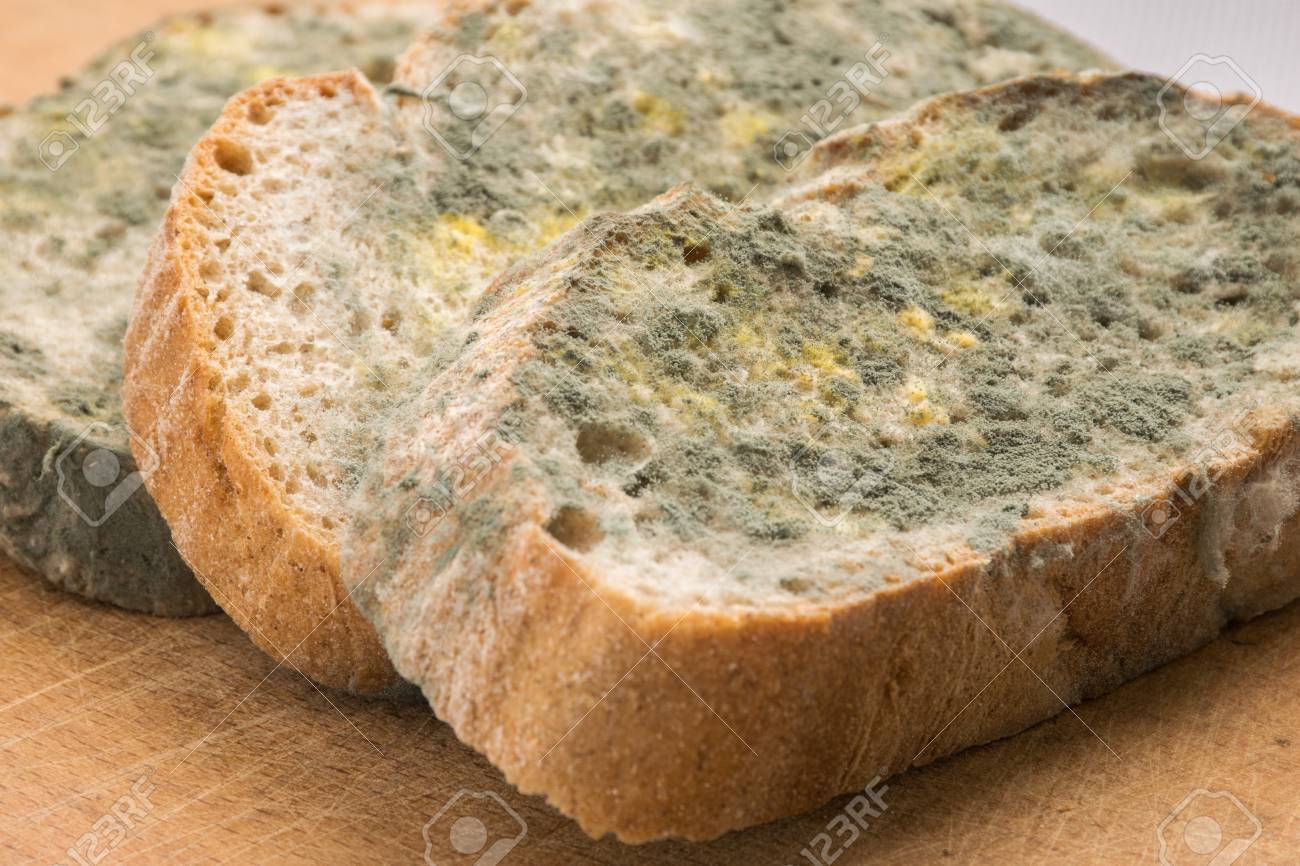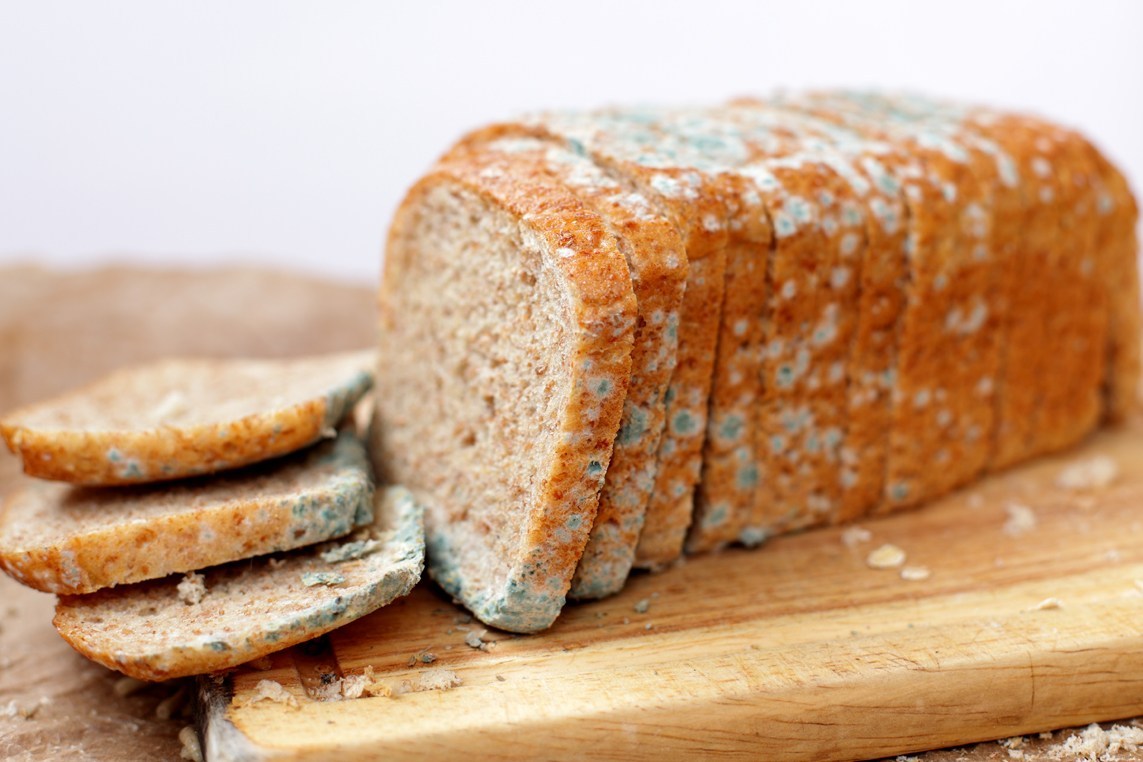This article is about the fungi known as mold. Slime molds and water molds are not fungi and are discussed in separate articles. For other uses, see Mold (disambiguation).A mold (US) or mould (UK / NZ / AU / ZA / IN / CA / IE)
is a fungus that grows in the form of multicellular filaments called hyphae.In contrast, fungi that can adopt a single-celled growth habit are called yeasts.
Molds are a large and taxonomically diverse number of fungal species in which the growth of hyphae results in discoloration and a fuzzy appearance, especially on food.The network of these tubular branching hyphae, called a mycelium,
is considered a single organism. The hyphae are generally transparent, so the mycelium appears like very fine, fluffy white threads over the surface. Cross-walls (septa) may delimit connected compartments along the hyphae,
each containing one or multiple, genetically identical nuclei. The dusty texture of many molds is caused by profuse production of asexual spores (conidia) formed by differentiation at the ends of hyphae. The mode of formation
and shape of these spores is traditionally used to classify molds. Many of these spores are colored, making the fungus much more obvious to the human eye at this stage in its life-cycle.
Biology
There are thousands of known species of molds, which have diverse life-styles including saprotrophs, mesophiles, psychrophiles and thermophiles and a very few opportunistic pathogens of humans. They all require moisture for growth
and some live in aquatic environments. Like all fungi, molds derive energy not through photosynthesis but from the organic matter on which they live, utilising heterotrophy. Typically, molds secrete hydrolytic enzymes, mainly
from the hyphal tips. These enzymes degrade complex biopolymers such as starch, cellulose and lignin into simpler substances which can be absorbed by the hyphae. In this way, molds play a major role in causing decomposition
of organic material, enabling the recycling of nutrients throughout ecosystems. Many molds also synthesise mycotoxins and siderophores which, together with lytic enzymes, inhibit the growth of competing microorganisms. Molds
can also grow on stored food for animals and humans, making the food unpalatable or toxic and are thus a major source of food losses and illness. Many strategies for food preservation (salting, pickling, jams, bottling, freezing,
drying) are to prevent or slow mold growth as well as growth of other microbes.Molds reproduce by producing large numbers of small spores, which may contain a single nucleus or be multinucleate. Mold spores can be asexual (the
products of mitosis) or sexual (the products of meiosis); many species can produce both types. Some molds produce small, hydrophobic spores that are adapted for wind dispersal and may remain airborne for long periods; in some
the cell walls are darkly pigmented, providing resistance to damage by ultraviolet radiation. Other mold spores have slimy sheaths and are more suited to water dispersal. Mold spores are often spherical or ovoid single cells,
but can be multicellular and variously shaped. Spores may cling to clothing or fur; some are able to survive extremes of temperature and pressure.

Although molds can grow on dead organic matter everywhere in nature, their presence is visible to the unaided eye only when they form large colonies. A mold colony does not consist of discrete organisms but is an interconnected
network of hyphae called a mycelium. All growth occurs at hyphal tips, with cytoplasm and organelles flowing forwards as the hyphae advance over or through new food sources. Nutrients are absorbed at the hyphal tip. In artificial
environments such as buildings, humidity and temperature are often stable enough to foster the growth of mold colonies, commonly seen as a downy or furry coating growing on food or other surfaces.Few molds can begin growing
at temperatures of 4 °C (39 °F) or below, so food is typically refrigerated at this temperature. When conditions do not enable growth to take place, molds may remain alive in a dormant state depending on the species, within
a large range of temperatures. The many different mold species vary enormously in their tolerance to temperature and humidity extremes. Certain molds can survive harsh conditions such as the snow-covered soils of Antarctica,
refrigeration, highly acidic solvents, anti-bacterial soap and even petroleum products such as jet fuel.:22Xerophilic molds are able to grow in relatively dry, salty, or sugary environments, where water activity (aw) is less
than 0.85; other molds need more moisture.

